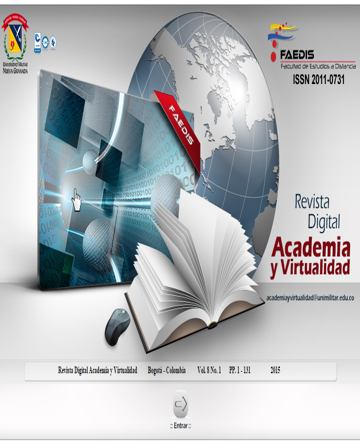Assessment of Environmental Factors affecting Spatial Skills Development of 1st semester Industrial Engineering students
Abstract
Spatial ability is one of the most important skills that an engineer, an architect or an artist should master. The conceptualizing process of an idea is the hardest stage of any creative process. Such a skill has become so vital that many authors believe its measure is critical to establish the likely academic and/or professional success, i.e. a noticeably defined type of intelligence. This paper has a description of basic concepts associated to spatial skill, showing a standardized assessment method for mind rotations, and also a statistical analysis of results for a sample of first semester students of Industrial Engineering in Francisco José de Caldas University in Bogota. The final section offers an analysis about some factors that may affect their performance and outlines feasible strategies to enable and develop spatial skill of new curricula students. It is a part of `Generation and validation of curricula for development of spatial skills of Engineering students through ICT implementation`, a project developed since August 2012.Downloads
Languages:
esReferences
Albaret, J., Aubert, E. (1996). “Etalonnage 15-19 ans du test de rotation mentale de Vandenberg”,EVOLUTIONS psychomotrices 8 (34).
Gardner, H. (1987). “The theory of multiple intelligences”.
Annals of Dyslexia, 37(1), p.1935.
Gutiérrez, J. (2010). “Estudio y evaluación de contenidos didácticos en el desarrollo de las habilidades espaciales en el ámbito de la ingeniería”,(Tesis Doctoral), Universidad Politécnica de Valencia, España.
Melgosa, C. (2012). “Diseño y eficacia de un gestor web interactivo de aprendizaje en ingenieríagráfica para el desarrollo de la capacidad de visión espacial”, (Tesis Doctoral), Universidad de Burgos. España.
Martín, N. (2009). “Análisis del uso de dispositivos
móviles en el desarrollo de estrategias de mejora de las habilidades espaciales”, (Tesis Doctoral), Universidad Politécnica de Valencia,España.
Navarro, R.; Saorín, J.; Martín-Dorta, N.; & Martín Gutiérrez, J. (2006). “Expresión Gráfica en Arquitectura e Ingeniería y el desarrollo de la visión espacial y habilidades espaciales de
los alumnos de las carreras técnicas”. Actas del VIII Congreso de Expresión Gráfica aplicada a la Edificación. Madrid.
Lieu, D.; Sorby S. (2010). “Visualization, modeling, and graphics for Engineering Design”,USA: Eds Delmar.
Linn, M., & Petersen, A. (1985). Emergence and Characterization of Sex Differences in Spatial Ability: A Meta-Analysis. Child Development, 56, pp.1479-1498.
Lohman, DF. (1996). Spatial Ability and G. En I. Dennis, & P. Tapsfield (Eds.), Human abilities:Their nature and assessment pp. 97-116. Hillsdale, NJ: Erlbaum.
Olkun, S. (2003). Making Connections: Improving Spatial Abilities with Engineering Drawing Activities. International Journal for Mathematics Teaching and Learning. Recuperado dewww.cimt.plymouth.ac.uk/journal/sinanolkun.
pdf.
Pellegrino, J.; Alderton, D.; & Shute, V. (1984). “Understanding Spatial Ability”, Educational Psychology, 19 (3), 239-253
Prieto, G., Velasco, A., Arias-Barahona, R., Anido, M., Núñez, A., & Có, P. (2008). “¿Mejora la visualización espacial con el aprendizaje del dibujo técnico?” Revista Mexicana de psicología, 25 (1), 175-182.
Sorby, S. (2007). “Developing 3D spatial skills for engineering students”, Australasian Journal of Engineering Education, 13 (1), 1-7.
Sorby, S. (2009). “Educational research in developing
-D spatial skills for engineering students.”International Journal of Science Education, 31 (3), 459-480.
Strong, S.; & Smith, R. (2002). “Spatial Visualization:
Fundamentals and Trends in Engineering Graphics”. Journal of Industrial Technology,18 (1), 1-5.
Sutton, K., Heathcote, A., & Bore, M. (2007).”Measuring
D Understanding on the Web and in the Laboratory. Behavior”. Research Methods, 39 (4), 926-939.
Universidad Distrital. (2009). Boletín estadístico.Autor.












